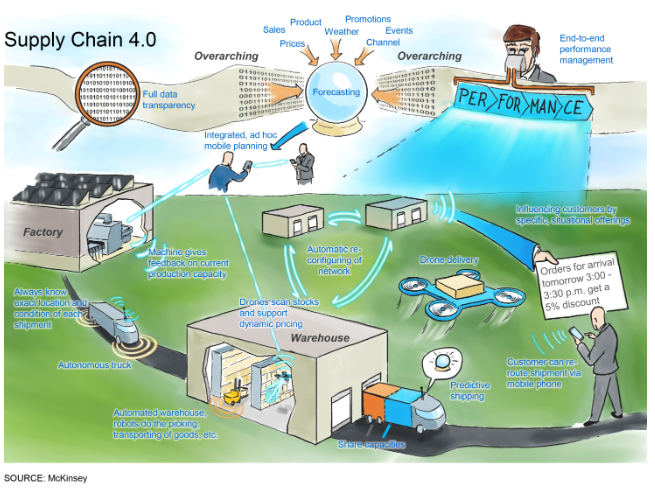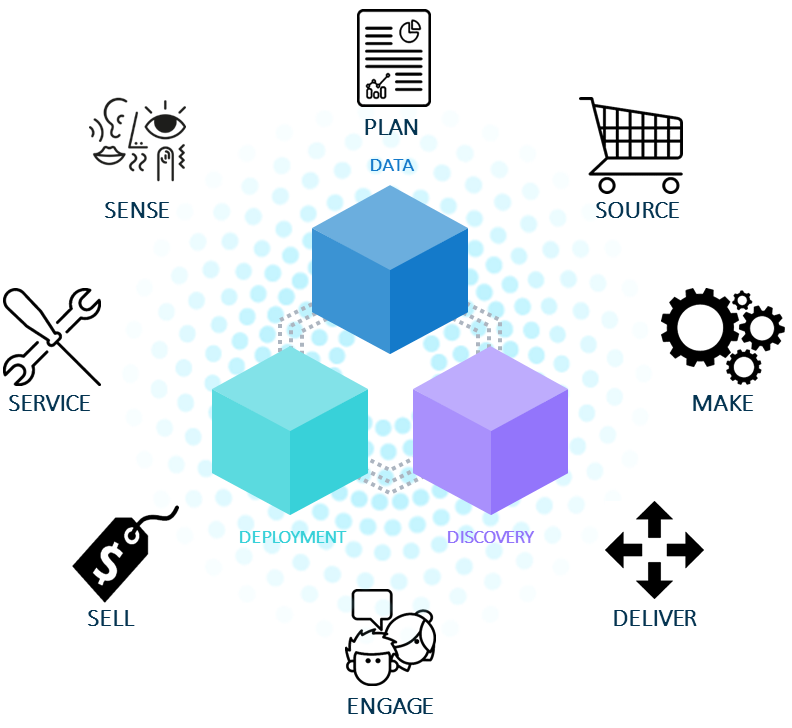As you will have read in my last blog, businesses are demanding better outcomes, and through IoT initiatives big data is only getting bigger. This presents a clear opportunity for organisations to start thinking seriously about how to leverage analytics with their other investments. Demands on supply chains have also never been so challenging, with growth in omnichannel retailing, hyper personalisation, volatile political and global markets driving increasing pressure on businesses with narrowing margins.
61% of organizations picked Machine Learning and AI as the most significant data initiative for next year
Source: Machine Learning and AI survey | O’Reilly Media and MemSQL, 2018
But before we start exploring this further, I find when speaking or writing about technology it's always important to clarify terms and definitions. Artificial intelligence (AI) is one term that needs clarification, with views and opinions ranging from a fancy name for computer programming to Skynet developing the Terminator, but in reality, AI really does drive value in many different industries.
According to a HubSpot survey conducted in 2019, 63% of people aren’t aware that they use artificial intelligence technologies nearly every day. These applications range from Netflix to Siri to Amazon to Tesla. Simply put, AI is the science of training systems to emulate human tasks through learning and automation. With AI, machines can:
- Learn from experience.
- Adjust to new inputs.
- Accomplish specific tasks without manual intervention.
Through careful consideration of how to apply AI, this technology can deliver genuine value.
AI comes in may formats:
- Machine learning is a branch of artificial intelligence based on the idea that systems can learn from data, identify patterns and make decisions with minimal human intervention.
- Deep learning is a type of machine learning used in recognizing speech, identifying objects in images and more.
- Computer vision enables systems to see, identify and process images or videos in the same way that human vision does.
Computer vision (CV) is one of the most interesting and recent formats of AI, and the applications range far and wide in many different industries (for more information see: The Difference Between Artificial Intelligence and Machine Learning).
The second term I want to clarify is the Internet of Things (IoT). Most people can relate to something that fits into an IoT capability, such as a smart watch, smart phone and even smart trainers, all providing data, capturing physical activities and providing a digital ‘footprint’ relating to that activity.
According to IDC's European Vertical Markets Survey 2016 – 2019, 22% of European organizations
were simply collecting their IoT data in 2018, but not deriving any value from it
Finally, “supply chain,” whether you put digital, smart, cognitive or intelligent before or after the term, the fact is the modern supply chain now spans a lot more than it used to, and needs to integrate more seamlessly to provide agility, speed and scale.
Historically, supply chain departments sat in their own silo, speaking their own language, and unless you had been working in supply chain for 50 years, members typically felt that no one really understands it.
But now these barriers must fall. The potential for extracting value from procurement decisions is high. The possibilities are there from real-time tracking to sensing demand fluctuations to customer sentiment. These are now just a few of the factors that need to be captured, integrated and squeezed for value to improve the supply chain.
McKinsey defines Supply Chain 4.0 as “the application of the Internet of Things, the use of advanced robotics, and the application of advanced analytics of big data in supply chain management: Place sensors in everything, create networks everywhere, automate anything, and analyse everything to significantly improve performance and customer satisfaction"

Steps to improve the supply chain
So how are organisations expected to keep up? Well, they need to have a solid strategy to handle data inside and outside the enterprise, manage data at rest or streaming, and be able to apply AI techniques to extract the value that each source presents. And they need to do it all quickly and effectively to make the most accurate decision they can for the best business outcome.
Simple, right? Maybe I’m oversimplifying, so let’s go into a little more detail.
SAS approaches supply chain challenges by understanding the intrinsic link between each operational business unit covering: Planning, procurement, manufacturing, logistics, customer engagement, price and promotion, after sales and sentiment analysis. Here, SAS has developed valuable intellectual properties around the application of advanced analytics to drive specific value in each area, following the simple analytical life cycle of data integration, discovery of insight and deployment of value via an analytical platform approach.
This approach is our data driven insight approach for Intelligent Supply Chain:

SAS Data Driven Insight for Intelligent Supply Chain
Taking this approach and combining it with IoT initiatives presents a new opportunity with data coming from new areas inside and outside the business to enrich data driven processes and drive even more value. Technology advancements around applying AI to demand forecasting, vibration sensors, acoustic and image sensors can improve productivity, efficiency and accuracy of many different aspects of a business.
The opportunity for businesses to enhance the value they get from all the data they generate is only growing and becoming more complex to manage. How analytics is built, applied, managed and executed will become serious questions of the future since today many businesses are just exploring the potential with limited commitments.
See below a few areas where AI and IoT are adding value to the wider supply chain.

Here are some SAS customers that have started this journey. Click on the company name to see how their analytics platforms have added value:
- Nestle applied advanced analytics from SAS to address demand planning challenges and achieved better results through automation and machine learning.
- Western Digital can predict yield excursions and reduce losses caused by the production of defective devices.
- Lockheed Martin talks to 600 sensors located throughout a single C-130J produces 72,000 rows of data per flight hour, using SAS predicts failures and optimised maintenance.
- UPS -- See how the package delivery company moves from descriptive to predictive to prescriptive analytics in this video.
- HSBC has deployed SAS Fraud Management as the foundation for its real-time fraud detection and ongoing fraud management across its global network.
- Levi Strauss & Co. is on a journey with SAS® to build an analytically driven, decision-ready culture that helps it connect to the people who love its apparel. Learn how in this video.
- Shop Direct turned to SAS to help the retailer convert browsers to buyers more often by balancing customer needs with customer value and risk.
- Carrefour relies on SAS AI to optimize supply chain management and reduce food waste.
All the businesses above have made strong commitments around their digital strategy to leverage analytics and drive commercial benefits using an analytical platform. Thus they have a strong foundation to build a more robust, agile and data driven supply chain by expanding their investment into other areas of the business (as shown above in the SAS Data Driven Insight Intelligent Supply Chain).
So, to answer my question, can the artificial intelligence of things make the supply chain intelligent? I personally feel it can -- from the customers I speak to, the technology I see and the advancements our partners are making in hardware like accelerated chip development and computer vision. Through these advancements and the strong ecosystems SAS is forging, organizations can expect better outcomes and put their trust in a strategy that drives value to their business.
For more information, download the latest ebook from SAS: The Rise of Computer Vision - Mechanics, use cases, real world successes.
